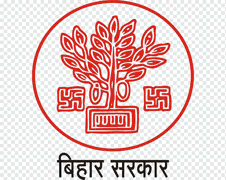About | Government of Bihar (Govt Bihar) , BIHAR Check here latest notification
The Government of Bihar: From Ancient Heritage to Modern Development
Located in eastern India, Bihar is known for its rich cultural heritage and historical significance. The state has been a crucial center in ancient times and continues to play a vital role in the development of modern India. The Government of Bihar is consistently striving towards the state's development, economic reforms, and social upliftment.
History and Background
Bihar's history dates back to ancient times, being the center of the Maurya and Gupta empires. The historical city of Pataliputra, now Patna, is the state's capital. The modern state of Bihar was established on January 26, 1950, when it became a state of the Indian Republic.
Political Structure
The structure of the Government of Bihar is established under the Indian Constitution and includes three main branches: the Executive, the Legislature, and the Judiciary.
1. Executive: The Governor of Bihar, appointed by the President of India, is the constitutional head of the state. The Chief Minister, who is the head of the executive power of the state, leads the Council of Ministers. The Chief Minister and the Council of Ministers are appointed by the Governor.
2. Legislature: Bihar has a bicameral legislature consisting of the Vidhan Sabha (Legislative Assembly) and the Vidhan Parishad (Legislative Council). Members of the Legislative Assembly are directly elected by the people, while members of the Legislative Council are elected through indirect elections. The Legislative Assembly plays a crucial role in the law-making process of the state.
3. Judiciary: The Judiciary in Bihar operates independently, with the Patna High Court being the highest judicial authority in the state. The High Court and subordinate courts oversee judicial processes and ensure justice in the state.
Development Initiatives
The Government of Bihar is engaged in several key areas for the state's holistic development:
1. Education: The Bihar government has implemented several reforms in the education sector. Initiatives such as the Mukhyamantri Gramin Piped Drinking Water Scheme and the Mukhyamantri Nishchay Swayam Sahayata Bhata Yojana aim to promote education in the state.
2. Healthcare: Significant efforts have been made in the healthcare sector. Schemes like the Mukhyamantri Swasthya Bima Yojana and Ayushman Bharat aim to provide healthcare benefits to the state's citizens.
3. Agriculture and Rural Development: Agriculture is the backbone of Bihar's economy. Schemes like the Mukhyamantri Krishi Anudan Yojana and the Pradhan Mantri Krishi Sinchayee Yojana provide financial assistance and irrigation facilities to farmers, boosting agricultural production.
4. Infrastructure: The government has taken significant steps in developing basic infrastructure such as roads, electricity, and water. Programs like the Mukhyamantri Gram Sampark Yojana and the Mukhyamantri Gramin Piped Drinking Water Scheme aim to improve infrastructure in rural areas.
Challenges and Future Directions
The Government of Bihar faces several challenges, including poverty, unemployment, and lack of basic amenities. To address these issues, the government is working on various policies and programs. Leveraging technology and innovation is a key focus for ensuring the state's development and prosperity.
Conclusion
The Government of Bihar is striving to balance ancient heritage with modern development. Through its continuous efforts in education, healthcare, agriculture, and infrastructure development, it aims to improve the quality of life for the state's citizens.
As Bihar moves forward, the government's focus on innovation, inclusive growth, and social justice will ensure its continued progress and success. The collective efforts of the government, local communities, and citizens promise a bright and promising future for Bihar, making it a prosperous and thriving state.

